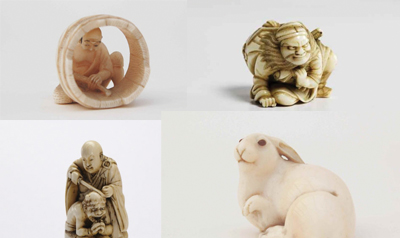It is not just things that carry stories with them. Stories are a kind of thing, too. Stories and objects share something, a patina... Perhaps patina is a process of rubbing back so that the essential is revealed, the way that a striated stone tumbled in a river feels irreducible... (Edmund deWaal)
To uncover the patina of history from art objects, old stories and past lives is an engaging enterprise for writers. Surely Nepal harbors many great stories like the one here—stories that reveal tantalizing memories and essential characteristics of a family or community, stories that need to be researched and recorded now before ‘progress’ and modernization irretrievably erase them, for when that happens we are all losers.
I’ve been reading a lot of memoir lately, accounts of notable incidents in people’s lives. Some memoir is about people and some is about ‘things’. One that I recently finished is about one European family’s collection of fine old Japanese art objects called ‘netsuke’. It’s by Edmund deWaal and is written with great passion and personal involvement: The Hare with Amber Eyes: A Hidden Inheritance (2010).
The hare (rabbit) of the book’s title is one of a priceless collection of 264 miniature netsuke sculptures from Japan dating to the 17th-18th centuries. Edmund deWaal weaves an intriguing tale of how they were acquired by an elite Russian-Jewish family called Ephrussi, then handed down over the generations, finally to the author himself as the great-great-grandson of the original collector.
The Ephrussis were merchant bankers who migrated in the 18th century from Odessa on the Black Sea to settle and grow rich in Paris and Vienna. There they became the financial equals to the more well known Rothschilds, elite European bankers and businessmen with whom they socialized.
 Over several generations the Ephrussis built huge personal fortunes and gained great fame, all of which was lost in the Second World War.
Over several generations the Ephrussis built huge personal fortunes and gained great fame, all of which was lost in the Second World War.
When Edmund deWaal received the collection of tiny Japanese ivory and boxwood carvings, he wanted to know how they had survived, who had touched and admired them, and who had protected them. He knew they had great value, for to connoisseurs netsuke is considered on a par with rare Fabergé glass and Meissen porcelain.
The Hare with Amber Eyes, however, is far more than a simple study in art history or beautiful carvings. And it’s more than the story of deWaal’s zeal to uncover a multi-generational biography.
Edmund deWaal is himself a noted European ceramicist, and a talented writer. His story-telling engages the reader, start to finish. Members of the Ephrussi family were noted for amassing a fortune and living well. They had a fervor for reading and collecting the best literature of their time. And they admired and accumulated great paintings and rare ‘objets d’art’, especially Japanese netsuke, ‘Japonisme’. All of this is detailed in the memoir. And though the Ephrussi family heritage was ultimately destroyed in the 1940s by war and anti-Jewish sentiment, not all was lost. The netsuke collection miraculously survived, and in his book deWaal successfully rubs away the patina to reveal the essential story.
One of the exceptional parts of the story is how the two centuries old collection was safely hidden while the Nazis plundered Vienna’s Palais Ephrussi, then smuggled out piece by piece by a devoted house maid who wore a billowing apron with big pockets. All the more remarkable is deWaal’s globe-trotting research to recover his notable ancestors’ bountiful history. The result is a well-tuned memoir with the netsuke as its focal point.
I cannot help thinking at this point that there must be roughly equivalent stories hidden away in many Nepalese family archives, homes and former palaces. Maybe not netsuke, but some other story or thing waiting to be uncovered and rubbed clear to reveal the past, then brought to light in a good book!










